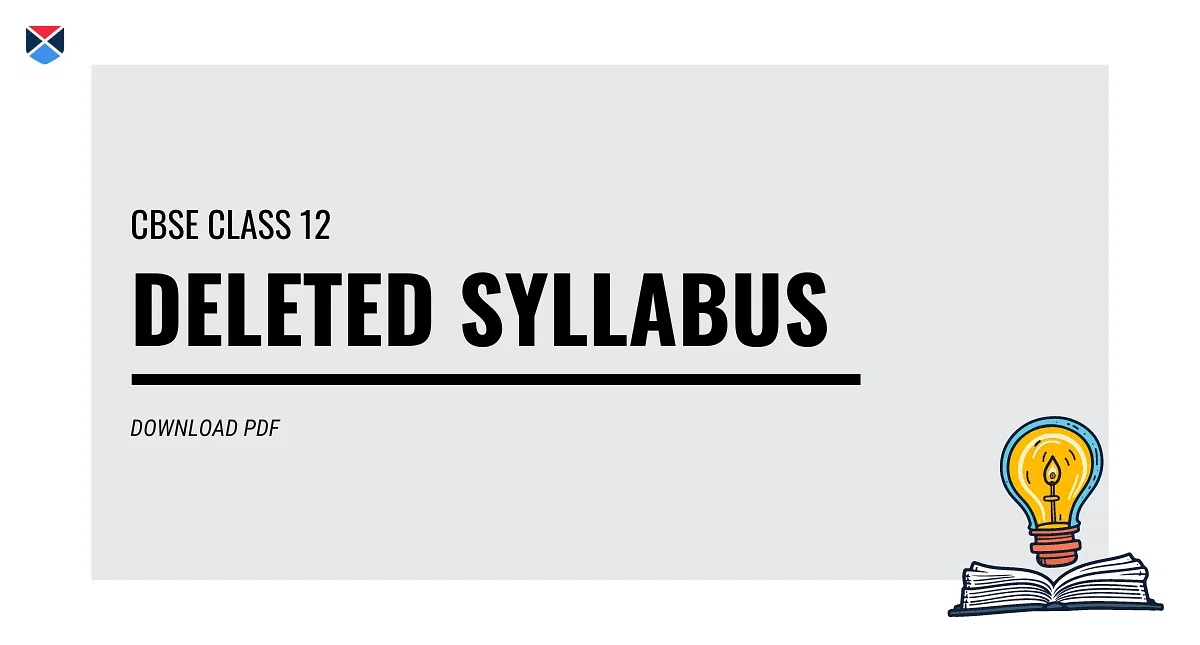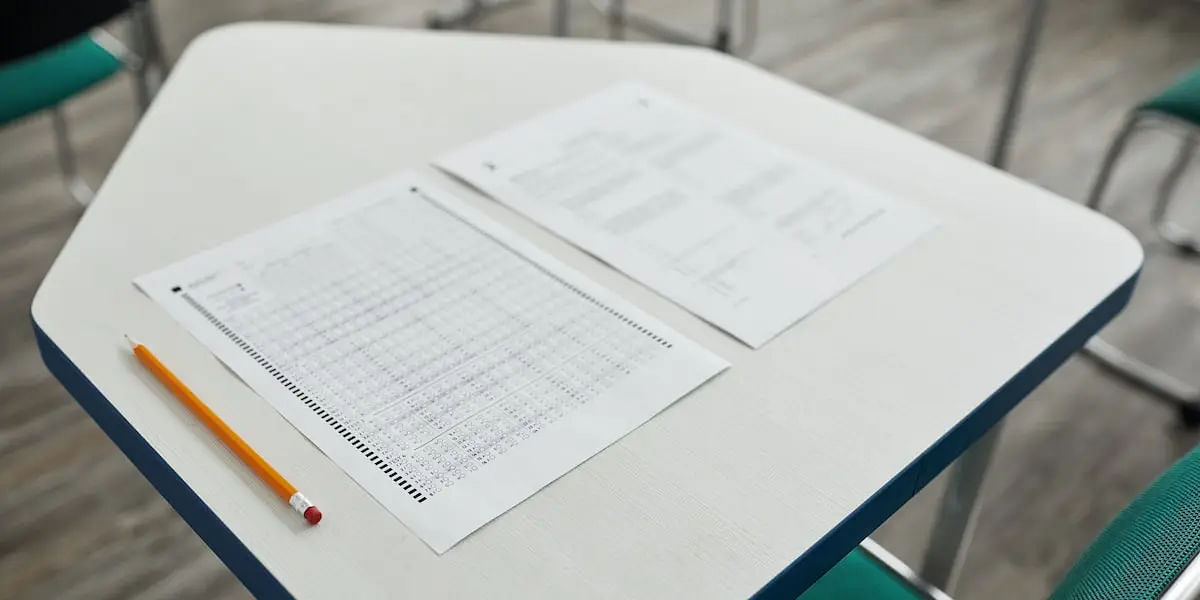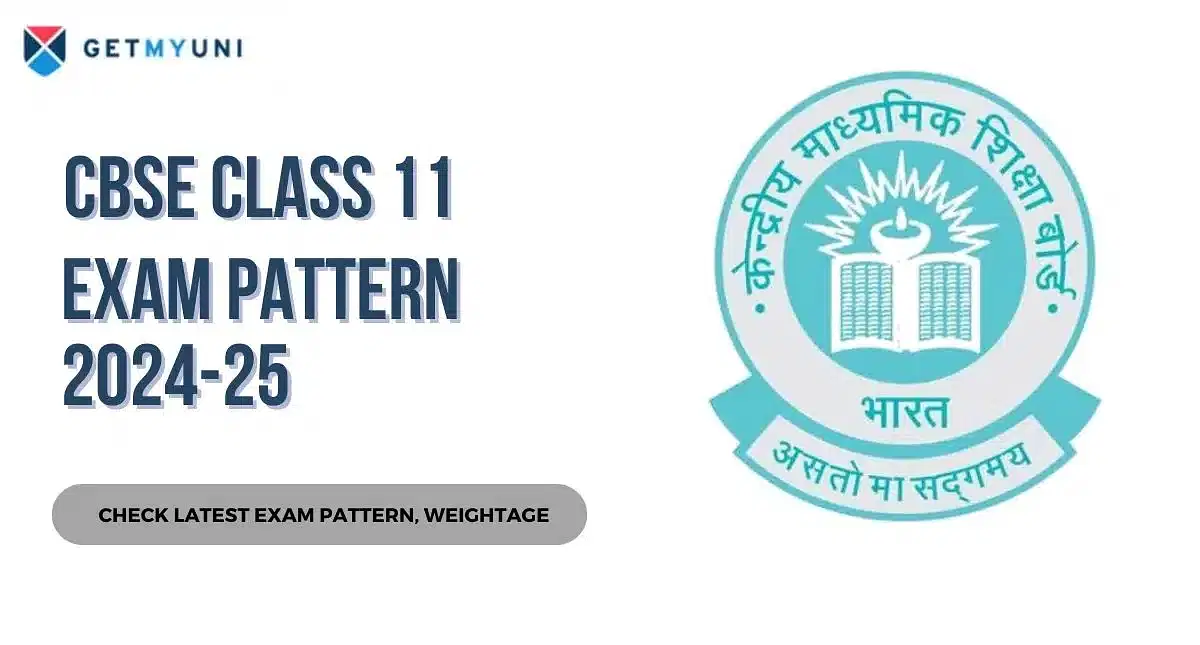CBSE Class 12 Chemistry Viva Questions with Answers 2024-25 must be practised well before appearing for the chemistry practical examination. Thoroughly preparing the CBSE class 12 chemistry viva questions 2025 will help students score all 4 marks in the viva voce. This article covers important topics, questions, and more.
Table of Contents
- CBSE Class 12 Chemistry Viva-Voce Questions with Answers 2024-25
- List Of Experiments in the CBSE 12th Chemistry Practical Exam
- CBSE Class 12th Chemistry Viva Questions with Answers 2024-25: Marks Distribution
- CBSE 12th Chemistry Viva Questions with Answers 2024-25: Prescribed Books
- How to Prepare With The CBSE Class 12 Chemistry Viva Questions with Answers 2024-25?
The CBSE class 12 chemistry viva questions with answers 2024-25 are curated for the viva voce session and hands-on experiments to prepare for the class 12th chemistry practical exam. The experiments are conducted to encourage real-world learning of the concepts. Whereas, the viva voce session is conducted to evaluate students' understanding of chemical principles and concepts.
While the viva questions are always curated from the official CBSE class 12th chemistry syllabus 2024-25, it can still sometimes make students nervous. The only way to get over that nervousness is to prepare thoroughly the recommended chapters. Some of the important chapters include surface chemistry, chemical kinetics, thermochemistry, electrochemistry, chromatography, and others.
In the CBSE 12th board exam for chemistry practical evaluation, students will be assessed based on the volumetric analysis, content-based experiment, salt analysis, project work, class record, and viva. The viva consists of 4 marks. This article covers a comprehensive list of CBSE class 12 chemistry viva Questions 2025 and a well-rounded preparation strategy.
CBSE Class 12 Chemistry Viva-Voce Questions with Answers 2024-25
The total marks allotted to the CBSE class 12 chemistry practical are 30. These marks are evaluated based on the assessment of different components. These components include experiments, project work, and practical file records. The minimum mark students have to secure in the Chemistry 12 practical exam is 10. Students are required to appear for their practical exams on a designated date, which is conducted in schools by external examiners.
Listed below are the most important CBSE class 12 chemistry viva questions with answers. Students are also advised to check the CBSE class 12 syllabus 2024-25 to get an idea about the important topics.
- What is meant by a standard solution?
Answer: A solution whose strength is known can be called a standard solution.
- What is the difference between molality and molarity?
Answer: The molality of a solution is the number of moles of a solute present in 1000 grams of the solution. However, the molarity of a solution is the number of moles of the solute present in each 1 litre of the solution.
- Is sodium hydroxide a primary standard?
Answer: No, sodium hydroxide is not a primary standard. It is a secondary standard.
- What is the equivalent mass of KMnO4 when it acts as an oxidising agent in an acidic medium?
Answer: KMnO4 loses 5 electrons per molecule when it acts as an oxidising agent in the presence of acids. Its equivalent mass is one-fifth of the molecular mass of the compound.
- What is a normal solution?
Answer: A solution which contains 1 gram-equivalent mass of the solute per litre of the solution is known as a normal solution.
- Why is the front door of the balance closed at the time of weighing?
Answer: The front door is closed because if the front door is open it causes the pan to vibrate due to the breath of the operator that causes the result to be inaccurate.
- What is the relationship between normality (N), molarity (M), molecular mass and equivalent mass?
Answer: Normality x Equivalent Mass = Molarity x Molecular Mass.
- What is the basicity of H2SO4?
Answer: 2
- What volume of 10M HCl must be diluted with water to get 1 litre of 1M HCl?
Answer: 0.1 litre
- What will be the normality of 0.10M KMnO4?
Answer: The normality will be (0.1 x 5 =) 0.5 N.
- What is titration?
Answer: The process of adding one solution from a burette to a solution in a conical flask to allow a chemical reaction to take place is called titration.
- What is the principle of volumetric analysis?
Answer: In volumetric analysis, the concentration of a solution is obtained by allowing a known volume of a solution to quantitatively react with a solution of a known concentration.
- What is the use of a rider?
Answer: A rider is used to weigh objects with a mass of less than 10 mg.
- What is the weight of a rider?
Answer: 10 mg.
- What is the maximum weight which can be weighed in a chemical balance?
Answer: 100 grams.
- Why must the Burette and pipette be rinsed with the solution with which they are filled?
Answer: The burette and pipette are rinsed with the solution with which they are filled to remove any excess water sticking to the sides, which would cause the cone to decrease.
- What are primary and secondary standard substances?
Answer: A substance can be called a primary standard if it is available in a high degree of purity if it does not gain or lose moisture in air, if it is stable and unaffected by air, if it is soluble and if the solution in water remains as such for a long time.
Any substance that does not have the above-mentioned characteristics is known as a secondary standard substance.
- Why must you not rinse a titration flask?
Answer: A titration flask must not be rinsed because during rinsing amount of the liquid will stick to the titration flask which will increase the pipetted volume in the titration flask.
- What is the endpoint?
Answer: The stage of titration when the reaction is complete is called the end point of titration.
- What is an indicator?
Answer: An indicator is a chemical substance which changes colour at the endpoint.
- Why should the oxalic acid solution be heated to around 60-70°C before titrating it with KMnO4 solution?
Answer: The reaction is slow in cold due to the slow formation of Mn2+ ions. Oxalic acid is heated to accelerate the release of the Mn2+ ions. This catalyses the reaction. This also expels the carbon dioxide evolved during the chemical reaction which if not removed will not allow the reaction to complete.
- Why must a burette with a rubber pinch cock not be used in KMnO4 titrations?
Answer: The reason is that KMnO4 reacts with rubber.
- What is the brown precipitate observed in KMnO4 titrations?
Answer: The brown precipitate (MnO2.H20) is formed due to the incomplete oxidation of KMnO4.
- Why is Mohr’s salt preferred to ferrous sulphate as a primary standard in volumetric analysis?
Answer: Mohr’s salt is stable and does not get readily oxidised by air. Ferrous sulphate is oxidised to ferric sulphate.
- Why are few drops of dilute H2SO4 added when preparing a standard Mohr’s salt solution?
Answer: A few drops of H2SO4 are added while preparing a standard Mohr's salt solution to prevent the hydrolysis of ferrous sulphate.
- Why does KMnO4 act as an indicator?
Answer: In the presence of dil. H2SO4 and KMnO4 react with the reducing agent (ferrous sulphate or oxalic acid). When the reducing agent is oxidised the excess amount of KMnO4 does not get decomposed and imparts a pink colour to the solution, thus acting as an indicator.
- What is the endpoint in KMnO4 titration?
Answer: The solution becomes permanent light pink to colourless.
- Name the oxidising agent and the reducing agent in the reaction between KMnO4 and FeSO4.
Answer: KMnO4 is the oxidising agent and FeSO4 is the reducing agent.
- Which indicator is used in KMnO4 titration?
Answer: No other indicator is used because KMnO4 itself acts as an indicator.
- Why must a pipette never be held from the bulb?
Answer: It is because the body temperature may expand the glass causing errors in volume measurement.
- What is permanganometry?
Answer: A redox titration that involves KMnO4 as the oxidising agent is known as permanganometric titration.
- What is a molar solution?
Answer: A litre of a molar solution contains 1 gm-mole of the substance. The symbol is 1M.
- Why must the last drop of solution not be blown out of the pipette?
Answer: This is because the drops that are left in the jet end are more than the volume that is measured by the pipette.
- Why is the lower meniscus reading taken for colourless and transparent solutions while the higher meniscus reading is taken for the highly coloured solutions?
Answer: This is because it is easier to read the lower meniscus for colourless solutions, whereas the higher meniscus for the coloured solutions. For coloured solutions, the lower meniscus is not visible.
List Of Experiments in the CBSE 12th Chemistry Practical Exam
The questions asked in the viva voce for CBSE 12th board exams are based on the experiments performed in the practical examination. Hence, students are advised to thoroughly prepare from the official syllabus with a special focus on the important topics.
Listed below are the chapter-wise list of experiments in the class 12 Chemistry syllabus CBSE board.Surface Chemistry
- Preparation of one lyophilic and one lyophobic sol Lyophilic sol - starch, egg albumin and gum Lyophobic sol - aluminium hydroxide, ferric hydroxide, arsenious sulphide.
- Dialysis of sol-prepared in (a) above.
- Study of the role of emulsifying agents in stabilising the emulsion of different oils.
Chemical Kinetics
- Effect of concentration and temperature on the rate of reaction between Sodium Thiosulphate and Hydrochloric acid.
- Study of reaction rates of any one of the following:
- Reaction of Iodide ions with Hydrogen Peroxide at room temperature using different concentrations of Iodide ions.
- Reaction between Potassium Iodate, (KIO3) and Sodium Sulphite: (Na2SO3) using starch solution as an indicator (clock reaction).
Thermochemistry
- Enthalpy of dissolution of Copper Sulphate or Potassium Nitrate.
- Enthalpy of neutralisation of strong acid (HCL) and strong base (NaOH).
- Determination of enthalpy change during interaction (Hydrogen bond formation) between Acetone and Chloroform.
Electrochemistry
- Variation of cell potential in Zn/Zn2+|| Cu2+/Cu with change in concentration of electrolytes (CuSO4 or ZnSO4) at room temperature.
Chromatography
- Separation of pigments from extracts of leaves and flowers by paper chromatography and determination of Rf values.
- Separation of constituents present in an inorganic mixture containing two cations only (constituents having large differences in Rf values to be provided).
Preparation of Inorganic Compounds
- Preparation of double salt of Ferrous Ammonium Sulphate or Potash Alum. Preparation of Potassium Ferric Oxalate.
Preparation of Organic Compounds
- Preparation of any one of the following compounds i) Acetanilide
- Di -benzalAcetone
- p-Nitroacetanilide
- Aniline yellow or 2 - Naphthol Aniline dye.
Determination of concentration/ molarity of KMnO4 solution by titrating it against a standard solution of:
- Oxalic acid
- Ferrous Ammonium Sulphate (Students will be required to prepare standard solutions by weighing themselves).
Qualitative analysis
- Determination of one cation and one anion in a given salt.
- Cation : Pb2+, Cu2+ As3+, Aℓ3+, Fe3+, Mn2+, Zn2+, Cu2+, Ni2+, Ca2+, Sr2+, Ba2+, Mg2+, NH4+
- Anions: (CO3)2- , S2- , (SO3)2- , (NO2)- , (SO4)2- , Cl- , Br- , I- , PO43-, (C2O4)2- , CH3COO- ,NO3
Also, Check: CBSE Class 12 Chemistry Deleted Syllabus 2024-25
CBSE Class 12th Chemistry Viva Questions with Answers 2024-25: Marks Distribution
The marks distribution for the CBSE class 12 chemistry viva questions 2024-25 is tabulated below. Students are also advised to review CBSE Class 12 Chemistry marks distribution for a comprehensive overview of the topic-wise evaluation process.
| Topic | Marks Distribution |
| Experiment 1 (on Volumetric Analysis) | 8 |
| Experiment 2 (on Salt Analysis) | 8 |
| Experiment 3 (Based on Content) | 6 |
| Investigatory Project | 4 |
| Class Record and Viva-Voce | 4 |
| Total Marks | 30 |
Also Check: CBSE Class 12 Exam Pattern 2024-25
CBSE 12th Chemistry Viva Questions with Answers 2024-25: Prescribed Books
The books that can be followed for CBSE class 12 Chemistry practical viva voce are as follows. Students must study the CBSE class 12 Books and prepare for the exam accordingly.
- Chemistry Lab Manual Class 12 |Viva-voce Questions|Lab Experiments|Investigatory Projects| with the latest Syllabus prescribed by CBSE
- CBSE Laboratory Manual Chemistry Class 12th [Experiments|Projects|Viva-Voce](English, Paperback, Arihant Experts)
How to Prepare With The CBSE Class 12 Chemistry Viva Questions with Answers 2024-25?
the viva questions with answers must be thoroughly reviewed which will help students with CBSE 12th exam preparation. The students who are about to appear for the CBSE class 12 board examination must abide by the following preparation tips for Chemistry practical viva voce 2024-25:
- Memorising the questions and answers: It is important to have a good knowledge of the concepts of the experiment. This is because the questions are asked based on the experiments.
- Knowing Exceptions: Exceptions are mostly asked in vivas. So, it is crucial to know the exceptions of every law in chemistry.
- Confidence is the key: The students must have confidence in themselves. They must not get nervous. They must understand that nervousness can affect their performance and thereby affect their overall scores on the exam.
- Work on weaknesses: It is crucial to know, understand, and address the weaknesses. The practice questions for viva voce that are available here can be referred to while practising the questions. This will help the students be aware of the type of questions asked in the viva voce.
- Choose the experiments carefully: The choice of experiments from among the options given must be done carefully. While choosing the experiments, the students must also keep in mind that they will be questioned on the experiments. Thus, it would be prudent to choose such an experiment that they are comfortable with.





























POST YOUR COMMENT